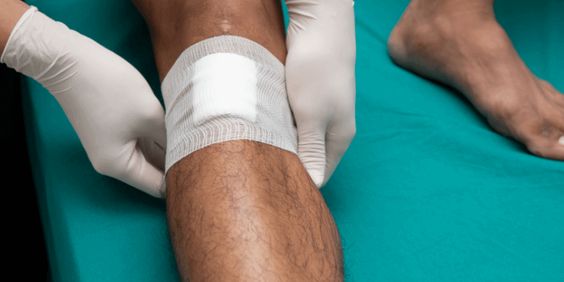Leg ulcers are serious conditions that can affect the health and quality of life of different people. This article will discuss leg ulcers in various populations, including older adults, people with diabetes, workers who stand for long periods of time, and Marines.
Seniors :
Elderly people are among the most common sufferers of leg ulcers. Older adults experience changes in their immune, vascular, and musculoskeletal systems as they age, making them more susceptible to leg ulcers. Older adults often suffer from chronic medical conditions such as high blood pressure, diabetes, and cardiovascular disease, which increase the risk of leg ulcers.
Leg ulcers in older adults often have the following characteristics:
Severe condition: Older adults have weaker immune systems, and leg ulcers tend to be more serious and require longer treatment and recovery.
Larger ulcer area: The musculoskeletal system of the elderly degenerates, leading to muscle atrophy and osteoporosis, making the ulcer area larger.
Comorbidities: Older adults often have other medical conditions, such as arthritis and depression, that also increase the risk of leg ulcers.
Diabetics :
Diabetics are another common sufferer of leg ulcers. Diabetes is a chronic disease that causes blood vessels and neuropathy, which makes diabetics more prone to developing leg ulcers. Leg ulcers in people with diabetes often have the following characteristics:
Difficult to heal: People with diabetes have weakened immune systems, and leg ulcers are difficult to heal and require longer treatment and recovery.
Smaller ulcers: Due to the neuropathy that diabetes causes, ulcers in people with diabetes are often smaller but more severe.
Ulcers on the soles of the feet: Plantar ulcers in diabetic patients are more common, because vascular lesions lead to ischemia in the feet, and the skin and tissues on the soles of the feet are easily damaged.
Workers who stand for long periods of time :
Workers who stand for long periods of time are another high-risk group for leg ulcers. Standing for long periods of time can lead to fatigue and increased stress in the legs, which can increase the risk of leg ulcers. Leg ulcers in workers who stand for long periods of time are usually characterized by:
Deeper ulcers: Standing for long periods of time puts increased pressure on the legs, which makes ulcers tend to be deeper and more difficult to treat.
Ulcers in the calf: The sores in workers who stand for a long time are mainly located in the calf, not the foot, because of the greater pressure on the calf when standing for a long time.
Marines :
Marines are also prone to leg ulcers due to high-intensity physical training and prolonged standing during their missions. Leg ulcers in Marines have the following characteristics:
The high number of ulcers: Marines undergo high-intensity physical training, which makes them susceptible to muscle fatigue and stress, which can lead to leg ulcers.
Smaller but deeper ulcers: Marines have smaller but deeper leg ulcers.
For more information on Innomed® elastic bandage self-adhesive, refer to the previous articles. If you have customized needs, you are welcome to contact us; we will serve you wholeheartedly. At Longterm Medical, we transform this data by innovating and developing products that make life easier for those who need loving care.
Editor: kiki Jia
Date: May 16, 2023

 English
English عربى
عربى Español
Español русский
русский 中文简体
中文简体








